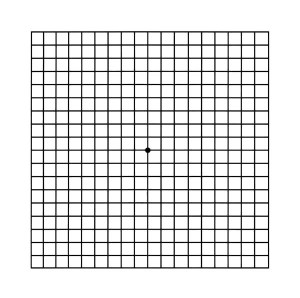Macular degeneration is a relatively common disease. Yet, the damage that it inflicts on one’s vision can, at times, be quite severe. This disease attacks eyes at a relatively older age, usually over the age of 60.
Macular degeneration, also known as Age-related Macular degeneration (AMD), is the primary cause loss of reading vision in the western world today. This disease has the potential to be more devastating as compared to even: glaucoma, diabetic retinopathy, retinal detachment, the necessity for corneal transplant and many other eye diseases.
If so, what is this disease that has the potential to cause such serious damage to an older person’s vision?
In this condition, damage occurs in the center of the retina, in an area known as the “macula,” which is the portion of the retina that is essential for the central sharp and clear vision. Of the entire surface of the retina, which is a few centimeters squared in size, this disease specifically attacks the very center of the retina (also called the macula, and it’s very center called the fovea). Once vision in this area is weakened, the patient loses the ability to read and occasionally the ability to recognize faces is also detrimentally affected. However, peripheral vision remains undamaged so that the patient remains oriented, able to navigate streets, walk around outside his home, and continue to perform many everyday activities.
Today, various treatments exist for this retinal disease, which may slow down further progression of the disease. Unfortunately, however, we usually do not have a treatment which can prevent, cure, or correct damage which has already occurred. For the past few years, based on large studies which showed a decrease in development of macular degeneration, ophthalmologists have been recommending that people who are at risk for macular degeneration take certain combinations of vitamins, which are marketed as such.
People who have already developed the disease, which is manifested as blurry central vision and certain characteristic signs apparent on their eye examination, can be offered certain laser treatments, which may delay disease progression but generally do not prevent or stop it.
It was found that in patients who underwent laser treatment, the disease usually continued to progress, but at a slower rate than in those who were not treated. Despite the fact that these treatments do not cure, but rather slow the disease, it is justified to consider such treatments in people whose eyes are deemed appropriate.
Patients who are at risk for developing macular degeneration are followed-up by ophthalmologists, generally treated with vitamins which serve as prophylactic treatment, and receive detailed explanation of when they have to urgently seek medical advice. This is usually when they discern changes, blurriness or distortion of vision in one of their eyes.
These patients occasionally receive a paper, called an Amsler grid, composed of many boxes and a central black point on which one is supposed to focus. One looks at the grid with each eye separately (once looking with the right eye while the left eye is covered and then with the left eye while the right eye is covered). As long as the person perceives all the lines to be straight and all the boxes to be of equal size, the disease has, in all likelihood, not developed. Sometimes, a person may feel that when he is looking at the Amsler grid he starts noticing changes that are expressed as curved, wavy or crooked lines, distortion of the boxes, or areas which appear distorted. If these symptoms appear for the first time or become worse than they had been in previous exams, it is generally recommended to urgently seek an eye examination.
In summary:
Macular degeneration (known in short as AMD) is a disease that affects the center of vision. This is the part of the retina which serves to provide clear, sharp vision and thus enables reading. Therefore, damage to it is manifest as a significant decline in the clarity of vision.
This is a disease for which modern medicine does not yet have a good solution for its prevention or cure. Despite this fact, at-risk patients and, of course, those who have already developed the disease can utilize the different solutions from such things as taking vitamins for prevention to laser treatment, which in appropriate situations, can delay disease progression.
People who suffer from AMD will never go blind, meaning that they will not completely stop seeing, but they may lose their central vision and thus the ability to read and recognize faces. Their peripheral vision, and with it the ability to maintain orientation, independence, and mobility remains unaffected. However, they will suffer from significant loss of visual acuity.
An entire section in this site is dedicated to the Amsler grid, which is a simple and precise test which checks for changes in central vision, used for monitoring the early changes that may indicate the development of macular degeneration.
Click here: in order to read about the Amsler grid and use of the Amsler grid in Age-related macular degeneration (AMD).

